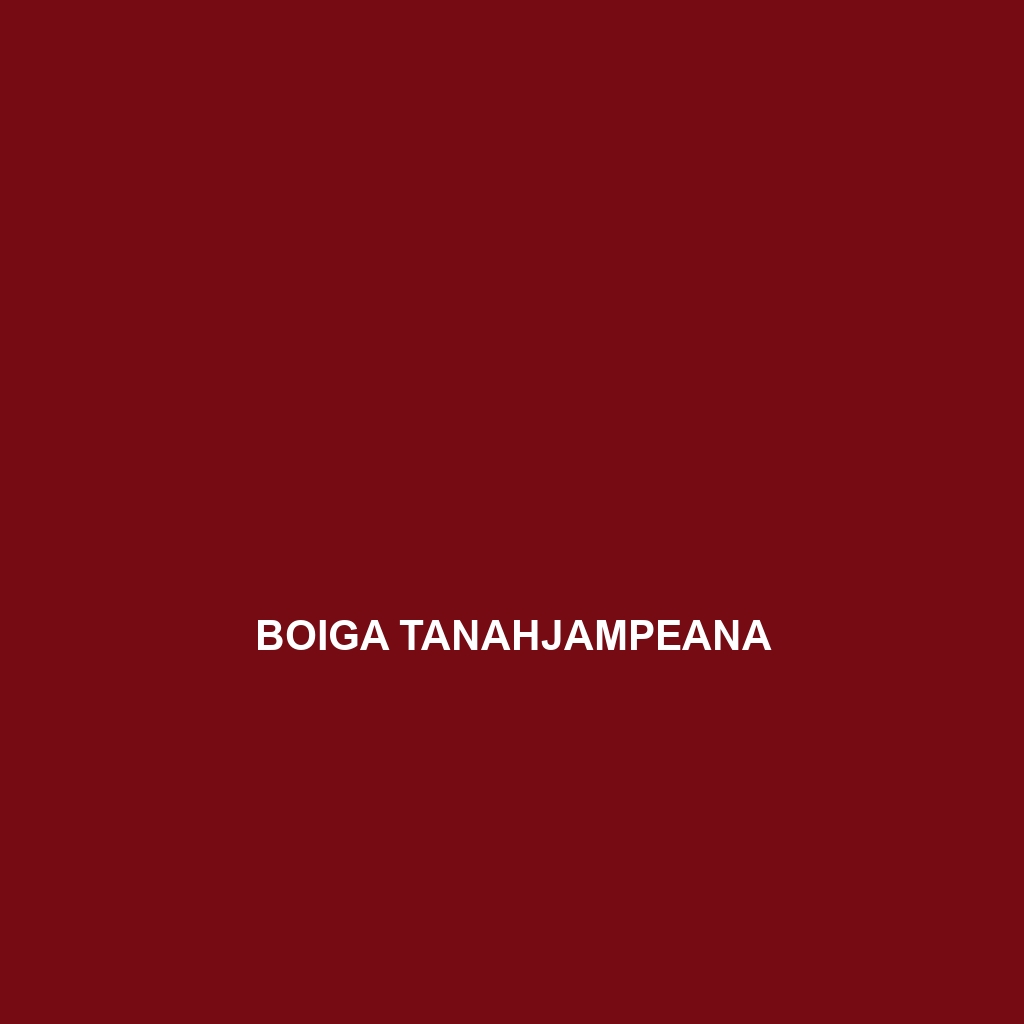Boiga siamensis – Species Description
Common Name: Boiga siamensis
Scientific Name: Boiga siamensis
Habitat: Boiga siamensis, commonly known as the Indochinese rat snake, is primarily found in Southeast Asia. This species inhabits a variety of environments, including tropical forests, grasslands, and agricultural areas. Its geographic range includes countries such as Thailand, Laos, Vietnam, and Myanmar. Boiga siamensis prefers areas with abundant vegetation and cover, which provide ample opportunities for hunting and nesting.
Physical Characteristics: The Boiga siamensis can reach lengths of up to 2 meters (approximately 6.5 feet). It displays a slender body with a distinctive tri-color pattern featuring yellow, black, and olive-green shades. The head is slightly flattened, and the large, round eyes are a notable feature, making it easy to identify. Its smooth, glossy scales contribute to its striking appearance, while the unique coloration serves as camouflage in its natural habitat.
Behavior: Boiga siamensis is primarily arboreal, known for its agile climbing abilities. This species is nocturnal, actively hunting during the night. It is a shy and secretive snake, often hiding among foliage or in tree branches. When threatened, it may mimic a more venomous snake’s posture to deter potential predators. Additionally, Boiga siamensis displays a unique hunting behavior, utilizing its keen eyesight and excellent sense of smell to locate prey.
Diet: The diet of Boiga siamensis primarily consists of small mammals, birds, and lizards. This snake is particularly adept at hunting in trees, preying on birds’ nests and catching small rodents. As a constrictor, it subdues its prey by wrapping around it, showcasing its efficiency in the ecosystem. Adult Boiga siamensis have been known to consume prey larger than their head, demonstrating their remarkable feeding habits.
Reproduction: Boiga siamensis engages in oviparous reproduction, laying clutches of approximately 5 to 15 eggs. The breeding season typically occurs during the rainy season, which is around June to August in its native regions. Incubation lasts about 60-70 days, after which the hatchlings emerge fully developed and ready to fend for themselves. This reproductive strategy ensures a higher survival rate during the abundant food availability of the wet season.
Conservation Status: The conservation status of Boiga siamensis is currently classified as ‘Least Concern’ by the IUCN. However, habitat destruction and human encroachment pose significant threats. Continued monitoring is required to ensure this species remains stable, as urban development and deforestation could impact its population.
Interesting Facts: Boiga siamensis is known for its unique ability to mimic the appearance of the more venomous Malayan krait, which deters potential threats. Additionally, due to its vibrant coloration and distinctive patterns, it is often sought after by reptile enthusiasts as a pet, which raises considerations for conservation efforts.
Role in Ecosystem: As an important predator, Boiga siamensis helps regulate populations of small mammals and birds, thus contributing to the balance of its ecosystem. Its presence indicates a healthy environment, making it a vital species for biodiversity in Southeast Asian habitats. Interactions with other species highlight its role in the food chain, where it serves both as a predator and prey within its ecological community.
